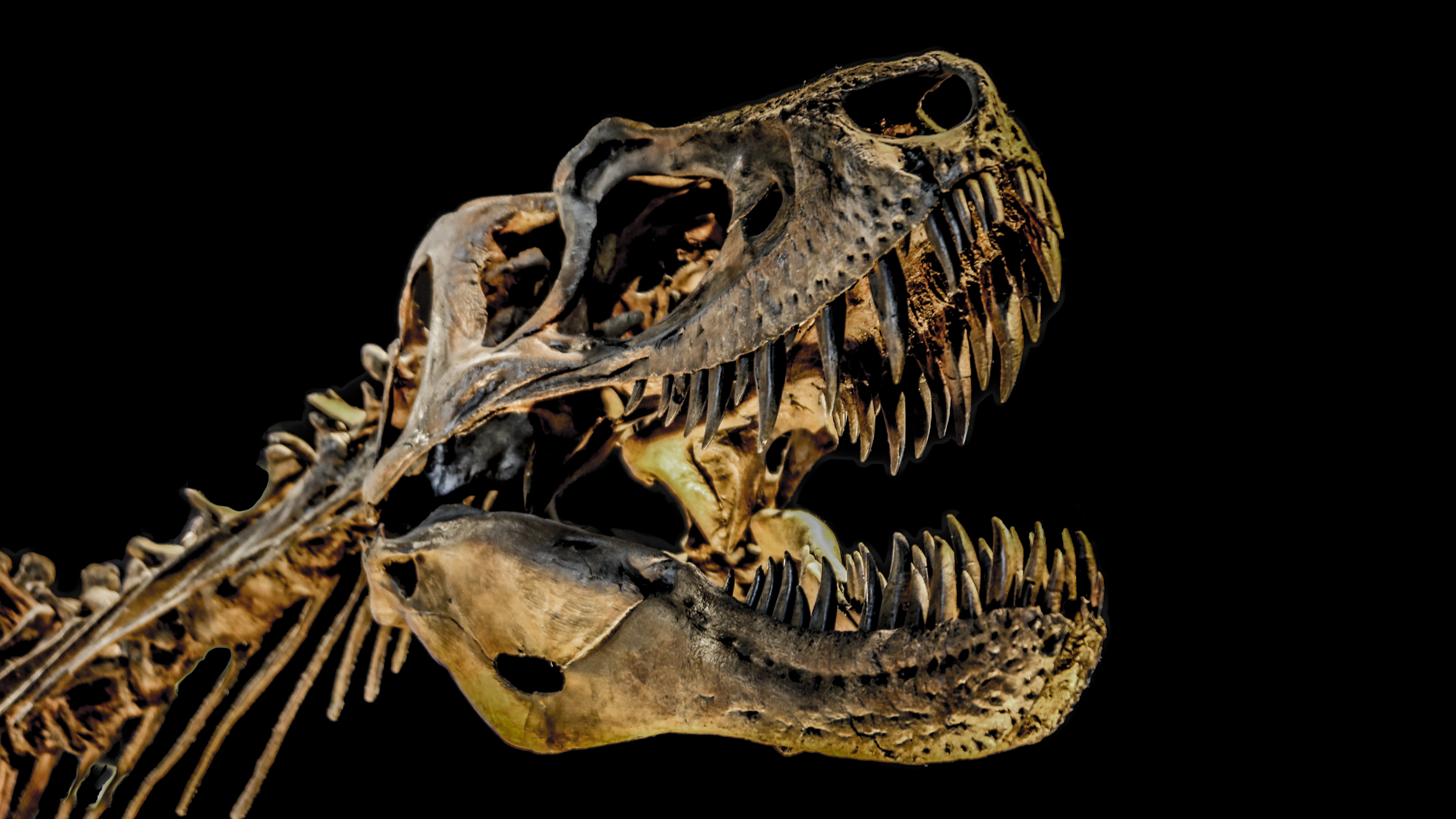
Fewer Tyrannosaurus rex fossils are available for scientific research because wealthy people are purchasing them for private collections, a new study has found.
Dinosaur fossils are a popular showpiece at many high-end auctions, with near-complete skeletons selling for tens of millions of dollars. However, the private trade in T. rex specimens could be hampering researchers’ understanding of the iconic Cretaceous predator, the study found.
T. rex researcher Thomas Carr, an associate professor of biology at Carthage College and director of the Carthage Institute of Paleontology in Wisconsin, showed that there are now more scientifically valuable T. rex specimens in private or commercial ownership than in public museums and other public trusts. Carr told Live Science in an email that the situation was “dispiriting and exasperating” and noted that the ownership of juvenile and subadult specimens was especially worrisome.
“The early growth stages of T. rex are bedeviled by a poor fossil record, and so the loss of them carries the heaviest scientific cost,” Carr said. “At the current moment, our knowledge of one of the most basic aspects of T. rex biology is frustratingly compromised by market interests.”
Carr published his findings, titled “Tyrannosaurus rex: An endangered species,” on April 10 in the journal Palaeontologia Electronica.
Related: Did The Rock buy Stan, the most expensive Tyrannosaurus rex on record?
To better understand the private market’s impact on the number of T. rex fossils available to researchers, Carr targeted what he described as “scientifically informative” specimens — skulls, skeletons and isolated bones that researchers would include in studies of T. rex development and variation.
Carr counted the “informative” specimens in public and private ownership by scouring books, museum records, news articles, auction records, anecdotal reports and other sources. He found a total of 61 specimens in public trusts and 71 specimens, including 14 juveniles, in private ownership — likely an underestimate given “the secretive nature” of the private market and year-to-year discovery of new specimens, according to the study.
Commercially sourced specimens sometimes end up in public museums, either on loan or after being purchased by the museum. But Carr found that only 11% of the commercially harvested T. rex fossils end up in public trusts, and that commercial companies are now discovering twice as many T. rex fossils as museums.
Carr also noted that the private sale of dinosaurs isn’t limited to T. rex. The luxury fossil market includes all kinds of dinosaurs — the most expensive ever sold was a stegosaurus, auctioned for $44.6 million in 2024. (It is currently on loan to the American Museum of Natural History in New York City). Carr hopes his study will inspire other researchers to examine how the commercial market is impacting other ancient species, like he has done for T. rex.
“My hope is that concerned colleagues will start counting up, and publishing on, the specimens of the species that they study that are lost to the commercial market,” Carr said.
Researchers react to T. rex trade
Thomas Holtz, Jr., a vertebrate paleontologist at the University of Maryland, has been researching the changes in Tyrannosaurus during its growth, and said it was “disheartening” to find out that many critical specimens that would help to clarify those changes aren’t accessible.
“Much like Carr, I am concerned not merely that there are good specimens which are not accessible to researchers, but especially that juvenile and sub-adult specimens happen to be overrepresented in the commercial samples,” Holtz told Live Science.
David Hone, a reader in zoology at Queen Mary University of London, told Live Science that while he’d love to see more specimens in public collections, he wasn’t as concerned about the T. rex fossil trade as Carr.
“For a start, there’s not that much that can realistically be done about the commercial trade of things like this,” Hone said. “And while I’d certainly love to see more specimens in public collections, there are still plenty that can be studied. There are rarer and more important things that are being traded illegally that I’d be more concerned about,” he said — referring to Brazilian and Mongolian fossils, including dinosaurs, that are smuggled illegally out of their respective countries.
